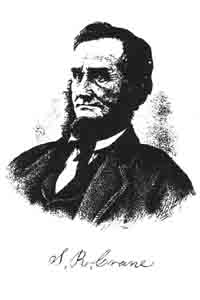Page
264
Presbyterian Church – The first Presbyterian Churches between the Miami Rivers were under the charge of the Transylvania Presbytery of Kentucky until October, 1798. From that date, they were under the charge of Washington Presbytery, so called from Washington, Mason Co., Ky., until 1810,
265
266
267
The foregoing are all the Presbyterian Churches within the limits of Warren County organized prior to the great revival, commonly called the New-Light revival, which, in 1802 and 1803, swept all those named as within the limits of Warren, as well as nearly every other Presbyterian Church in the Miami Valley, out of the Presbyterian denomination. None of these churches were able to secure the whole time of a pastor. All the early preachers had two or more congregations under their charge, besides preaching at private houses or in the woods at different localities. Turtle Creek Church, at Bedle’s Station, was probably the largest and most influential of the Presbyterian congregations between the Miami Rivers, Cincinnati alone excepted. About the year 1798, Rev. James Kemper, the pioneer of Presbyterianism in Southwestern Ohio, and the first minister stationed in Cincinnati, took charge of the Turtle Creek Church. He was a man of much energy and industry, and was highly esteemed as a preacher and a man. Although he had other congregations under his care at the time, he made the Turtle Creek settlement his home. He purchased a half-section of land, built a good hewed-log house and made lasting improvements, evidently with the expectation of remaining permanently. He did not remain long, however, as pastor of the church or as a resident. Tradition gives two reasons for his separation from the church. One was a misunderstanding with William Bedle, one of his Elders, about a line dividing their farms; the other, that the pastor’s wife wore too costly and stylish a bonnet to suit the membership of the church.
A. H. Dunlevy says: “The Turtle Creek Church was made up almost exclusively of plain farmers, and they determined to preserve, if possible, that plainness and simplicity of manners and dress which they conceived the New Testament enjoined on all members of a Christian Church. While all extravagance and gayety of dress were prohibited among male members, the women were to ‘adorn themselves in modest apparel, with shame-facedness and sobriety, not with embroidered hair or gold or pearls, or costly array.’ While the church existed, this plainness of dress was rigidly enforced.”
